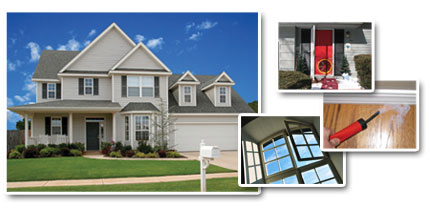In Business Since | License #
In Business Since | License #



Detection, then correction. Air leaks can be found throughout a house. To eliminate them, you have to know where to look and what sealing techniques to use.
Air sealing is the process of sealing leaks in a home's building envelope to limit the amount of air that leaks out of and into the house. Conditioned (heated or cooled) interior air leaking out of the house is called exfiltration. Outside air that leaks in is called infiltration.
Most air exfiltration takes place through the attic. The basement or crawl space is a major source of air infiltration.
Dr. Energy Saver can solve leaks in your home with our proven air sealing products. Get in touch with your local dealer to schedule an inspection!
There's no doubt that air leakage wastes energy and allows certain rooms to get too hot or too cold at certain times of the year. But how leaky is your house, and where are the leaks, exactly? To find out, your Dr. Energy Saver technician may suggest a blower door test. By using a giant calibrated fan to depressurize the house, the energy technician can actually measure air leakage and "see" different leak locations using tools like smoke pencils and an infrared camera. An experienced energy analyst also knows where to look for typical leaks.
Don't be surprised if your house is VERY leaky. Countless gaps, cracks, open chases and holes are created during normal house construction. Few builders have the training or time to do air sealing during new house construction. But Dr. Energy Saver has industry-leading materials and techniques to seal every type of leak that can be found in a house. We've gained our air sealing expertise by performing "before" and "after" blower door tests to verify dramatic improvements in building tightness.
Want to see air sealing in action? Check out these air sealing videos that show Dr. Energy Saver founder Larry Janesky performing a variety of leak-stopping upgrades.
Looking for a price? Get a no cost, no obligation free estimate.